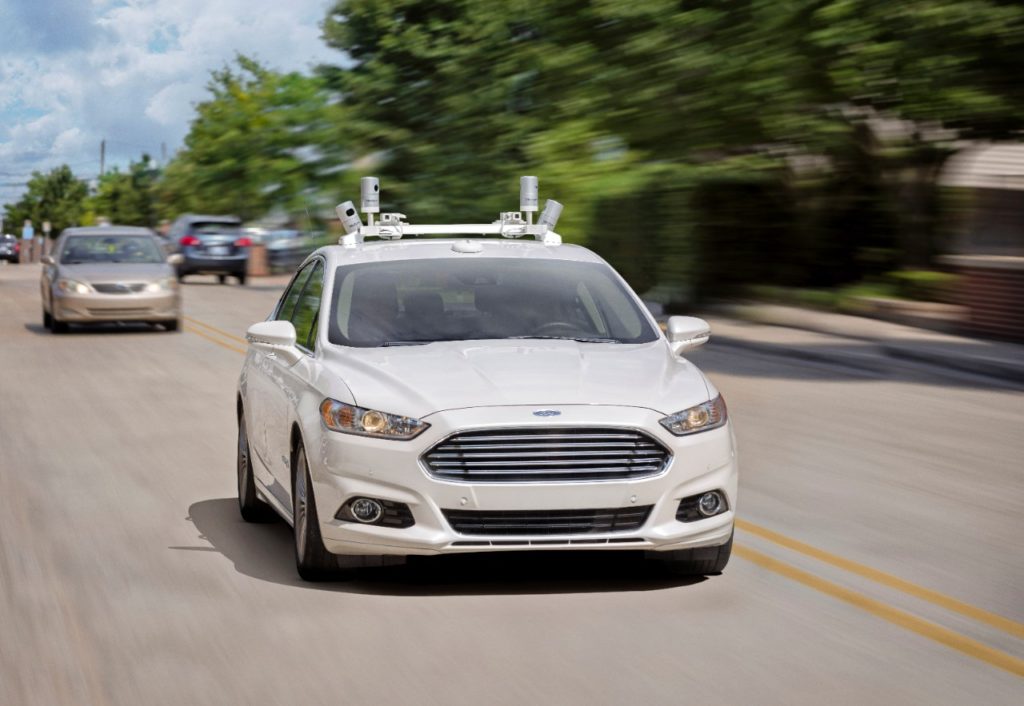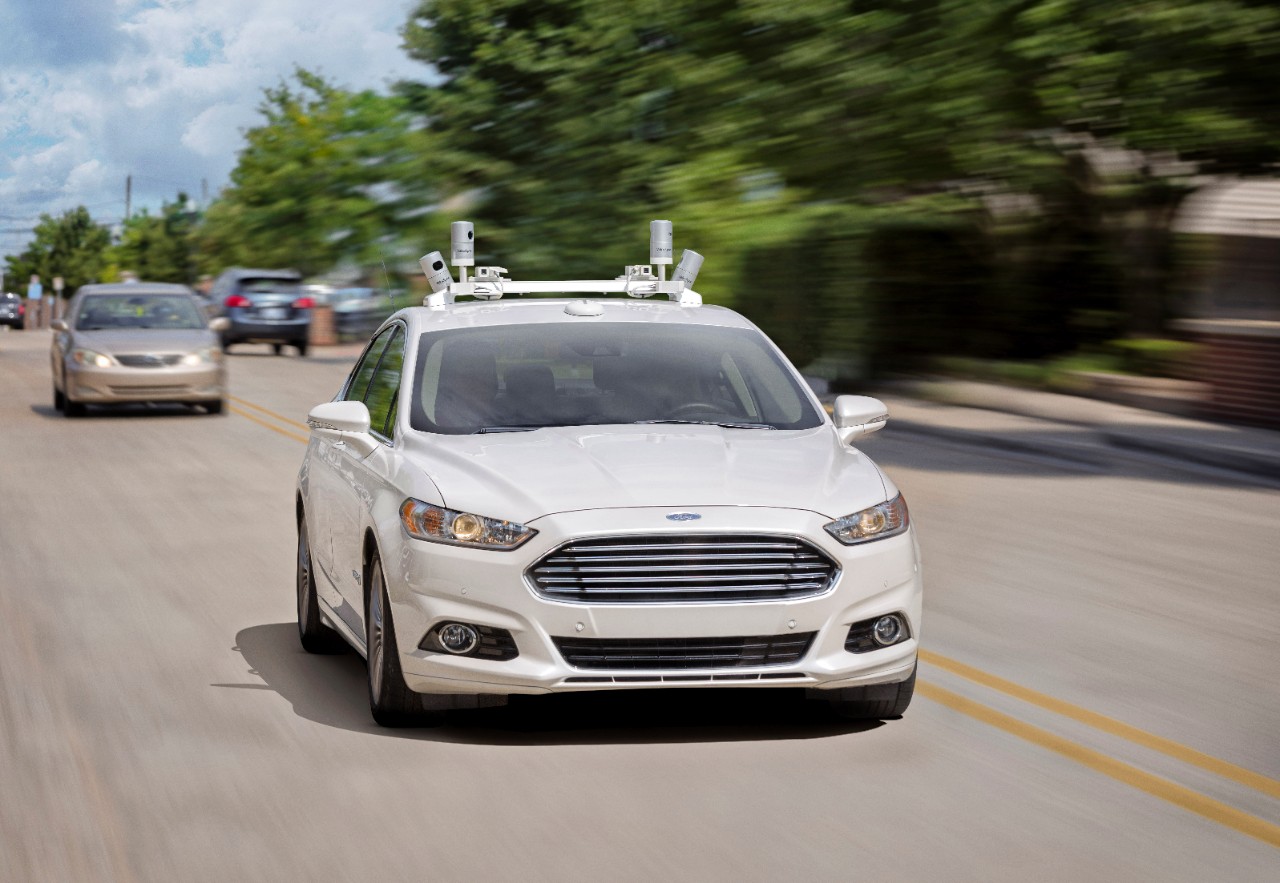- monitoring the environment and conducting operational tasks such as steering, braking, and accelerating;
- making tactical determinations such as responding to events, using signals, changing lanes, and turning; and
- handling dynamic driving task requirements in situations such as expressway merging, high-speed cruising, and low-speed traffic jams.
“The next decade will be defined by automation of the automobile, and we see autonomous vehicles as having as significant an impact on society as Ford’s moving assembly line did 100 years ago,” said Mark Fields, Ford president and CEO. “We’re dedicated to putting on the road an autonomous vehicle that can improve safety and solve social and environmental challenges for millions of people – not just those who can afford luxury vehicles.”
https://youtu.be/lITdVxm_hD0
To achieve commercial operation of a high-volume vehicle with no steering wheel, accelerator, or brake pedal, the company is:
- investing in or collaborating with four startups to enhance its autonomous vehicle development;
- doubling its Silicon Valley team and more than doubling its Palo Alto campus; and
- this year, tripling its autonomous vehicle test fleet to what the company asserts will be the largest test fleet of any automaker – 30 self-driving Fusion Hybrid sedans on the roads in California, Arizona and Michigan, with plans to triple it again next year.
Ford is engaged with many partners in developing technology such as advanced algorithms, 3D mapping, LiDAR, and radar and camera sensors. The partners Ford highlighted in this week’s announcement include:
- Velodyne, a Silicon Valley-based company developing light detection and ranging (LiDAR) sensors;
- SAIPS, an Israel-based computer vision and machine learning company Ford has acquired to further strengthen its expertise in artificial intelligence and enhance computer vision;
- Nirenberg Neuroscience LLC, a company which has developed a machine vision platform for performing navigation, object recognition, facial recognition and other functions; and
- Civil Maps, a Berkeley, California-based company that is developping high-resolution 3D mapping capabilities.
This week’s announcement is another in a series of steps Ford has taken over the past 18 months to test new ideas and address transportation challenges. For example, in January, 2015, the company announced 25 experiments (YouTube video) scattered around the globe (eight in North America, nine in Europe and Africa, seven in Asia and one in South America) and designed to anticipate what customers will want and need in tomorrow’s transportation ecosystem.
The 25 experiments address four global megatrends challenging today’s transportation model and limiting personal mobility, especially in urban areas:
- Explosive population growth;
- An expanding middle class;
- Air quality and public health concerns; and
- Changing customer attitudes and priorities.
As many experts predict the need in the coming years to expand mobility options to millions, if not billions, of people who do not fit the traditional car-owner/driver profile, Ford is clearly investing significant resources to be ready to meet the opportunities.
I invite you to view my other posts and sign up to receive future posts via email. I also invite you to follow me on LinkedIn and Twitter, and to contact me via my homepage.


